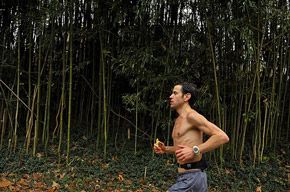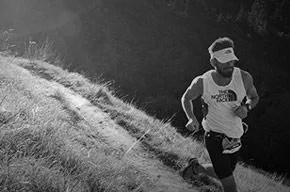You’ve probably been hearing more about them: occasional murmurs of very long distance races, men and women running six marathons across the Sahara, a 3,100 mile race in Queens, NY, in the middle of summer. Ultrarunning, or running more than a 26.2 mile marathon in a single shot, seems an unlikely pursuit — and it is. But it’s also growing.
An estimated 60,000 people finished an ultra in the U.S. in 2012, up from about 10,000 in 1990. That number is still small compared to the 487,000 people who completed a marathon in the U.S. in 2012, but it’s still an awful lot of people running exceptional distances. The sport has been bolstered by author-athletes like Dean Karnazes (Ultramarathon Man: Confessions of an All Night Runner), Scott Jurek (Eat and Run) and Christopher McDougall (Born to Run: A Hidden Tribe, Superathletes, and the Greatest Race the World Has Never Seen). Pros are pulling down sponsorships from serious outdoor companies like New Balance and Salomon; The North Face sponsors a series of high-profile ultra runs with growing purses and a competitive pool; mainstream media are starting to cover races. There’s a growing interest in the exceptional.
And now you’re thinking about toeing the line for an ultra. Good for you. We’ve got a handy guide to help you through, complete with advice from a few pros at the top of the sport. Here’s a preview: it’s going to be hard work, but well worth the trouble.
GP HELPS YOU PREPARE, ONE STEP AT A TIME: The Complete Guide to Running Your First Marathon | Road to La Ruta | Road to Ironman
Setting Goals, Hatching a Plan
Anyone who has run a marathon — and if your goal is to run an ultra, a marathon is a sensible stepping stone — knows that the time commitment is akin to a part-time job. It’s manageable, but one look at the training plans we suggested in the Complete Guide to Running Your First Marathon and it’s clear that you’ll be running five days per week for anywhere from a few miles to 20, or for roughly 30 minutes to four hours, not including recovery work. For an ultra, expect to carve out more time: anywhere from a little bit more if you plan to run a 50k (31 miles) to a whole lot more for a 50 miler. Anything longer than that, and you should plan on giving up all of the time that was once free.
MICHAEL WARDIAN IS ALWAYS RUNNING






